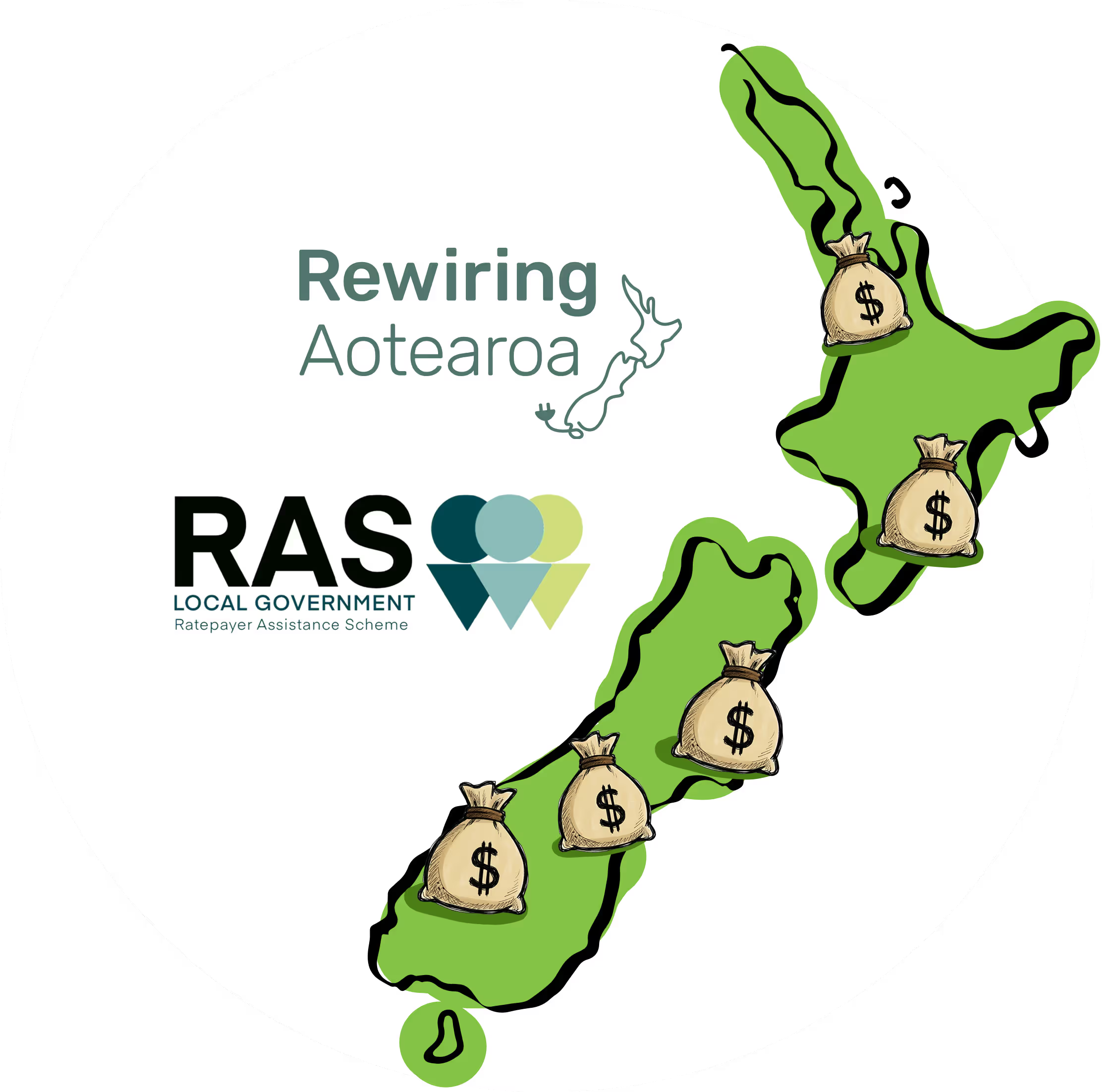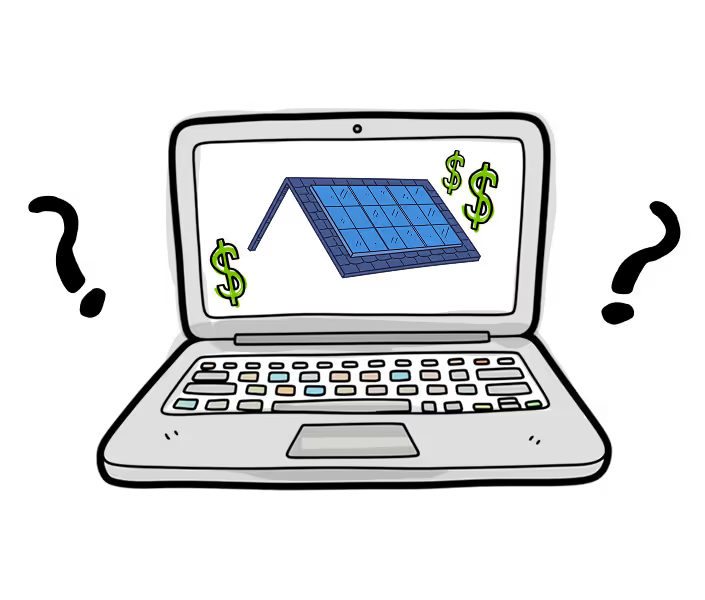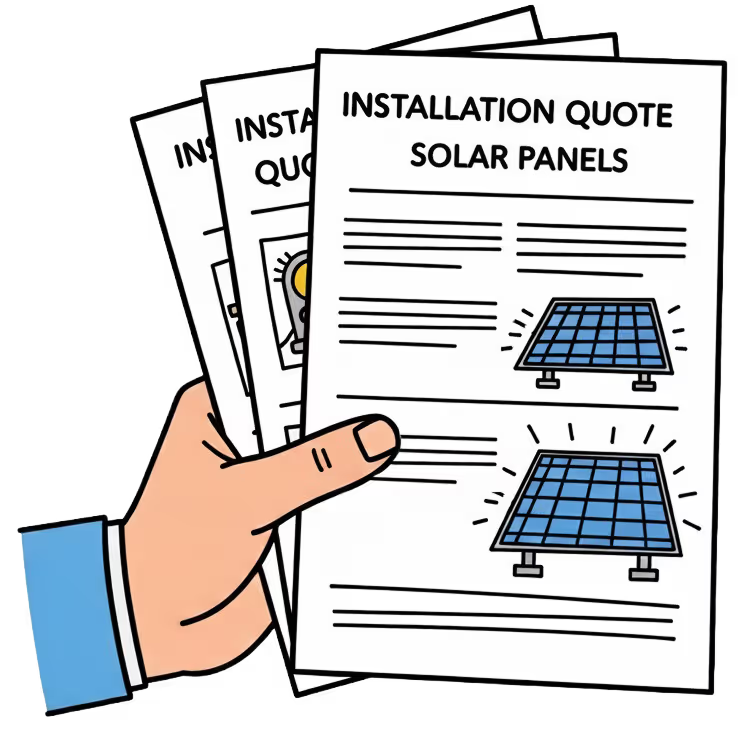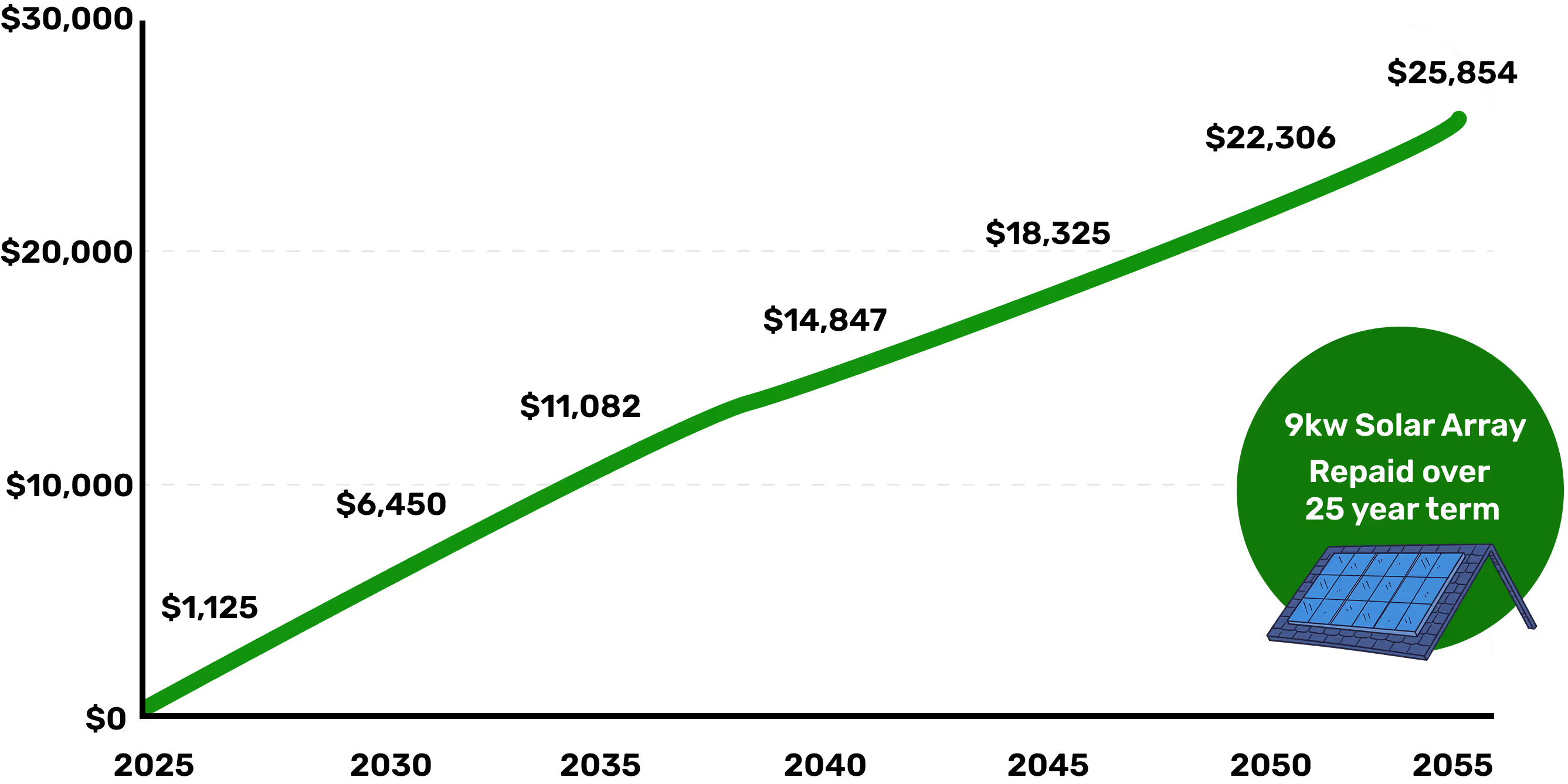Energy Affordability Loans for Ratepayers
Why?
Although it’s becoming more affordable and the economics more than stack up, upfront costs remain a hurdle for many.
To ensure every New Zealander has access to the upfront capital, Rewiring Aotearoa is working with the local government sector to supercharge the proposed Ratepayers Assistance Scheme (RAS) with Electrification Loans included.

How will it work?
Low interest rates
These could be perhaps 1–1.5% below average mortgage rates (approximately 4–4.5%, assuming a 5.5% mortgage rate).
Flexible terms
Provide rate payers with terms such as longer payback periods, no fees for early repayments, and flexible payment options, which could include deferral of repayment until the sale of the property for certain households.
For all ratepayers
Financing for all ratepayers of participating councils. This differs from green loans offered by banks which tend to be only available for customers who have a significant portion of their mortgage remaining.
Easy application and installation processes
There is likely to be an online portal where you can explore different solar and electrification upgrades, find accredited installers, and then come back when you are ready and apply for the loan in a few short steps. Because the loan is linked to the credit ratings of the councils and central government, rather than individual homeowners, and the loan is secured against the property, the loan process will be straightforward and fast.
The wider RAS includes additional elements to assist older New Zealanders to be able to afford to stay in their homes, and unlock additional housing development.
What's Needed?
Achieving this would require initial capital investment, establishing the necessary legal, financial, and digital arrangements, along with a few key legislative changes. Eight councils, plus EECA, have committed the further funding required to get the RAS ready for final equity investments from councils and central government. Rewiring Aotearoa is closely involved in RAS development.
Perhaps the biggest hurdle is the required legislative changes, which while relatively small and simple require Parliamentary time. We’re advocating this be prioritised very early in 2026 to unlock the significant cost of living and wider benefits for ratepayers as soon as possible.


FAQs
Every council will be able to elect to offer all, some or none of the RAS offerings (including electrification loans). Every ratepayer in a participating council’s jurisdiction will be able to apply for loans available to them.
Not in its current design. In the future, the platform established by the RAS may be used to package and present any subsidies on offer. This combination of loans and grants will be particularly important for low income households who stand to benefit most from the savings electrification offers.
Councils who contribute funding will have an equity stake, with a return on their investment once the RAS starts making a surplus. Assisting ratepayers in their region to electrify also furthers progress on councils’ climate and sustainability goals, and lowers the cost of living for residents who take up the loans.
With the right incentives, we believe landlords are likely to take up the loans on offer, especially because of the potential ability to defer payment until sale of the property. Rewiring Aotearoa is working hard on further innovation to complement the RAS and ensure all renters can benefit from electrification.
What will the scheme look like?

Household jumps on an online portal, potentially hosted by EECA, and sees what products their council has elected to make available in their area.

Use the portal to explore solar and electrification upgrades and view accredited installers.

Request and compare quotes from accredited installers you found in the portal, then choose your preferred option.

Apply for a RAS loan, with any eligible ratepayer approved if they meet the simple requirements.

Work is completed by accredited installers and as soon as you are happy with your installation, the RAS pays the tradie.

Repay a low interest, long term loan with flexible options, including longer payback periods and, for some households, deferral until the property is sold.
Cost of living busting numbers
Repayments are included, so savings build each year, from about $1,100 in 2025 to roughly $26,000 by 2055. Solar helps lock in cheaper energy, reduce exposure to power price rises, and ease cost of living pressure.

What can the community do?
Approach your local elected officials and council staff to encourage them to support the RAS by signing up as a partner council and contributing to the establishment costs. Use your experiences and stories from the community to explain the need for electrification loans, and sell them on the benefits.
Get locals excited about electrification loans. These loans will provide an option for households to access flexible, low interest loans that will significantly reduce power bills.
While these council backed loans will support all ratepayers to access the benefits of electrification, we encourage all New Zealanders who can access the upfront finance to make the switch now. The sooner you invest, the sooner your household (and wallet) will see the benefits of electrification.
When these loans are online, Electric Communities will be key to educating residents on taking advantage of the loans, and continuing to advocate for the benefits of electrification.


